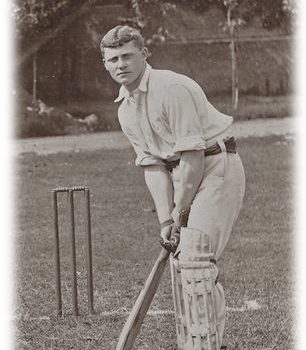 Royal Air Force
Royal Air Force
Nason, John William Washington
John William Washington Nason
Rank: Captain
Regiment: 46th Squadron, Royal Flying Corps / Formerly 11th Battalion, Royal Sussex Regiment
Parents: Dr & Mrs Nason
Address: 23 Grosvenor Crescent, St Leonards formerly of Corse Grange, Gloucester
Other Info: An article published in the Hastings & St Leonards Observer on 13th January 1917 reads; “It is as difficult as it is most hateful to thing of Pat (the inner circle of friends knew him as Jack) Nason as dead.
He was ever so very much alive, and it was because he saw or recognised no limit to the activity of life that he seemed later from time to time to have over-run himself. J. W. Nason, some twelve years ago, shot into the firmament of local sport, like some bright and brilliant meteor, just wonderful as a big school lad, rapidly earning the full right to do himself justice before a bigger public in sport than we here provide..
Hundreds of Hastings folk must still recall the calm, strong nerve and perfect mastery of the bat, with which Nason faced county bowling in the Central Ground when not more than seventeen, earning well merited and loud applause. At Cambridge he rapidly received his ‘Blue’ and what was true of him at cricket applied also to football, golf and other games; indeed Jack was just a fine typical example of that first class all-round lad who excel splendidly in games, a produce of no country in Europe save England.
Surely the gainsayers of our field games must for ever hold their carping tongues in the face of the superb and magnificent work which has been so freely done in all branches of the services during this war by the men and lads of our public and big private schools, and four Universities – work which could never have been done a quarter so well but for the ‘playing fields’ of the Empire, where they learnt both to obey and to command, to know when to hit with all their might and when to play the waiting game; how to hold the harder catch and how to field with a quick and accurate return; and above all and before all, how to play, then and afterwards, cricket with a straight bat, however sticky the pitch and tricky the bowling.
It is to me a fine and comforting thought that Captain J. W. W. Nason on that mid winter day, piloting his machine, died especially that the boys and girls of the Empire should year by year play all their games freely and happily (and if possible as well as he did), innocent of the iron heel of the hated Hun who knows no true sport in spite of all his vaunted love of English games, the true spirit of which he has not, and cannot have, any true understanding or grasp. ‘Playing the game’ is a term unknown in the German vocabulary, but it may it ever be the golden rule of the British Empire.
In asking you to publish these few lines to express my warm and affectionate regard for a friend of whom the brightest future was hoped, I am not one bit again unminded of the scores of Hastings men who have also fearlessly and equally bravely given up their lives for us all. Men may be never much in the public eye like Jack Nason, but none the less splendid in their service and in facing their duty when their call comes. Of them one and all it can be said, as for Captain Nason, that they fully earned that very finest, truest, noblest and grandest epitaph; This land inviolate your monument.
C. B. G.”
According to CWGC, John died aged 27 on 26th December 1916. He is remembered at Vlamertinghe Military Cemetery, grave reference V.B.11.
The photograph of John Nason has been kindly provided by the Sussex Cricket Museum and Educational Trust.
Published: January 1917
Please use the comments box below if you can provide more information about this person.

1 COMMENT
This man was born 4 August 1889. In the 1901 census he was with his family at 19 Collier Road, Hastings. His father Charles St Stephen Richard Nason was a doctor. Both Charles and his wife Frederica was born in Ireland. There was also his elder brother William Frederick Charles Nason and a sister and a servant. The children were all born at Corse, Gloucestershire.
His father died on the 30 October 1905, his address being 113 High Street, Hastings.
John was in the 1911 census in the 13-room 23 Grosvenor Crescent, St Leonards on Sea. He was 21, a private schoolmaster. The head of household was his widowed mother Frederica Nason. There was also his elder brother William Frederick Charles Nason, on “private means”, a sick nurse, and three servants.
He had attended University School, Hastings, and Queen’s College, Cambridge. He was commissioned in August 1914 and transferred to the Royal Flying Corps in January 1916. In June 1917 probate of his estate was to his brother William, Lieutenant in the Royal Flying Corps, who survived the war after being invalided out in 1918.
De Ruvigny’s Roll of Honour (published, but also available on the priced Ancestry database) has a detailed biography and a photograph.
In 1915, at Hastings, he married Dorothea Helen Gawthorne, born Penang, Malaysia, daughter of a lawyer. Mysteriously, De Ruvigny says he was unmarried. Possibly the probate of his will to his brother rather than his wife was because of an estrangement. She married again, 29 October, 1919, at Richmond, Surrey. Her husband was John Howard Whitlark, an engineer. They had one child, Norman, who was killed in Italy in 1945. Her husband died in 1926 in Hampshire. In 1928 she married, at Kensington, Gilbert Gates, a journalist. In 1939 she was running a restaurant. She died in 1972.